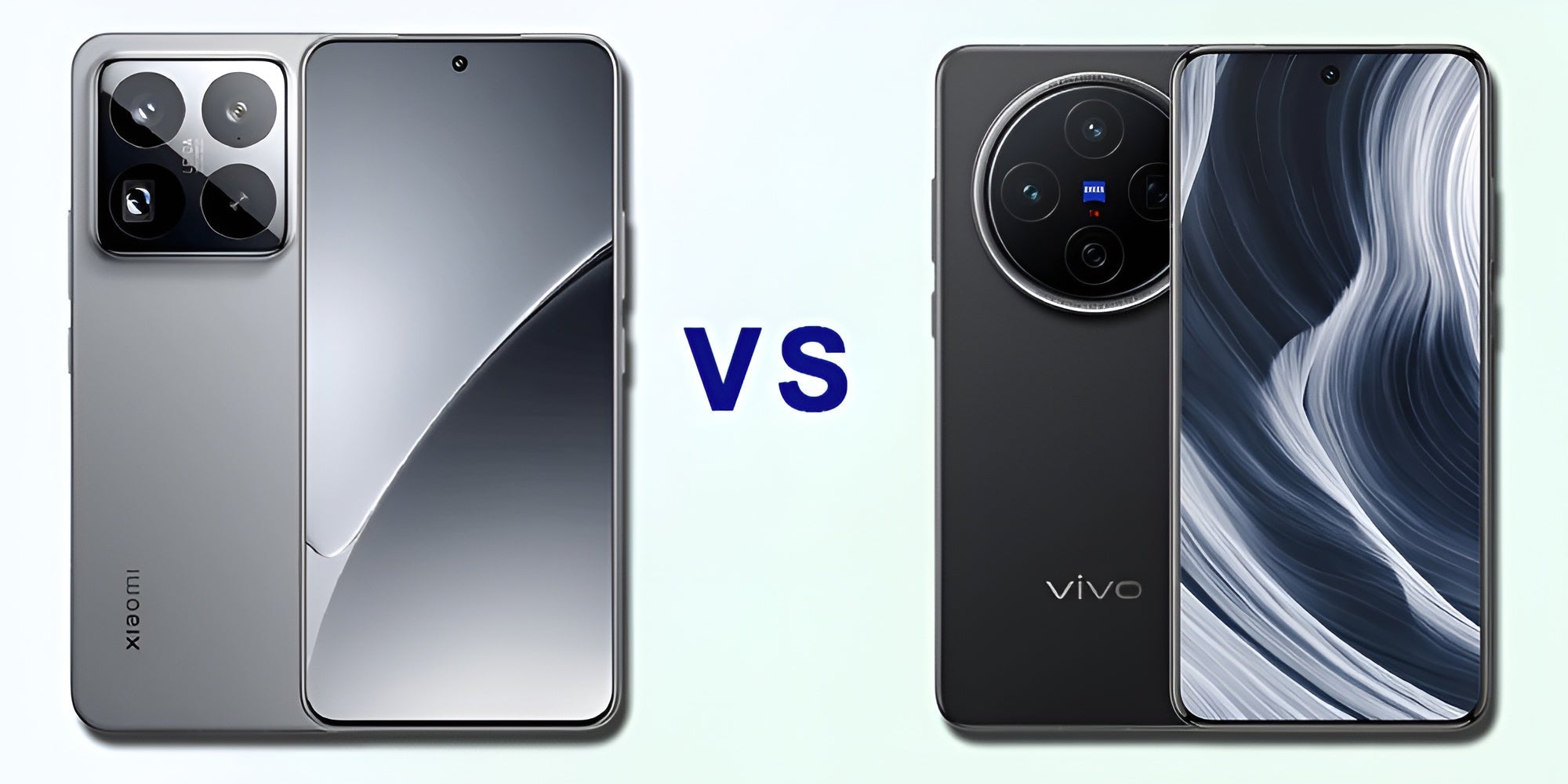Xiaomi vs Vivo — Which is better?

Introduction
Choosing between Xiaomi and Vivo in India comes up every time a new phone launches. Both brands offer wide lineups that target budget, mid-range and flagship buyers — but they differ in price, specs, features, camera performance, battery life and software experience. This guide compares Xiaomi and Vivo across the factors that matter most to Indian buyers and gives a concise review-style verdict at the end. Wherever current launches or market data matter, I’ve cited recent sources so you can see what’s new in 2025.
Brand positioning in India
Xiaomi: Known for Redmi (budget/mid) and Xiaomi/11/14 series (flagship), the brand sells on price/value — packing strong specs at aggressive prices and broad after-sales reach. Xiaomi also localizes production and pushes budget 5G models to India.
Vivo: Positions itself around camera innovation, design and premium displays with distinct series. Vivo often invests in in-camera features and premium builds, marketing camera features heavily to photography enthusiasts. Vivo also competes strongly in mid and premium segments.
Price & value: who gives more for the rupee?
If your primary criterion is price, Xiaomi historically undercuts rivals by offering solid specs for less. Xiaomi’s Redmi lineup often starts in the ultra-budget range and goes up to affordable flagships — meaning you can get a good camera and large battery without paying flagship prices. Recent Redmi Note launches show this value approach.
Vivo’s portfolio includes very affordable models (Y and T series) but its headline devices (X series, foldables) target higher price points and premium buyers. Expect to pay more for features like curved AMOLED panels, advanced telephoto lenses, or fast wired/wireless charging. If strict budget is your top concern, Xiaomi usually gives more raw specs per rupee.
Performance & specs
Both brands offer models with flagship chipsets and others with cost-effective SoCs.
-
Xiaomi: Balances performance across price tiers — Snapdragon and MediaTek chips power Redmi and Xiaomi flagships. Xiaomi tends to put more RAM and storage options into midrange phones to boost benchmark numbers for the price.
-
Vivo: Focuses on flagship silicon for X/T series in premium segments (e.g., Dimensity/Snapdragon top chips in 2025 flagships) and tunes hardware for smooth display, camera processing and sustained performance. Recent Vivo T4 Ultra shows a strong chipset/display combo for mid-premium users.
Verdict: For pure benchmark value at low-to-mid budgets, Xiaomi often wins; for tuned flagship experiences (display + camera + sustained performance), Vivo’s higher-end models shine.
Camera: hardware, software and real-world shots
Cameras are a key battleground.
-
Xiaomi: Delivers very capable camera hardware at aggressive prices (50MP+ sensors, OIS on higher tiers, multi-camera setups). Xiaomi’s software has improved but can be hit-or-miss on processing choices (contrast, oversharpening) depending on the model. Good all-rounders exist across price ranges.
-
Vivo: Invests heavily in imaging R&D, often adding unique optics (periscope telephoto, large sensors) and camera features aimed at enthusiasts (night modes, portrait tuning, pro modes). Vivo’s premium phones often outperform rivals in telephoto or portrait scenes due to specialized lenses and processing.
If camera telephoto, low-light portraits or zoom quality matter, Vivo’s premium X/T lineup typically offers an edge. For balanced camera performance with stronger price value, Xiaomi is hard to beat.
Battery life & charging
Battery capacities are comparable across the two brands at each price point, but charging technology differs.
-
Xiaomi: Offers large battery cells and very fast wired charging on some models (including 120W+ in top models historically), while budget Redmi phones balance capacity and efficiency for long battery life. Xiaomi’s MIUI also includes battery saving options.
-
Vivo: Also provides large batteries — and in recent premium launches (e.g., T4 Ultra) Vivo combined large 5,500mAh cells with fast charging (e.g., 90W) and strong display efficiency to push endurance. Vivo sometimes pairs fast wired charging with better display tech to reduce power draw.
Verdict: Both deliver excellent battery life in their segments. If you want the absolute fastest top-tier wired charging, compare specific models — Xiaomi historically offered extreme wattages, but Vivo’s flagship charging is competitive and optimized with display/OS tuning.
Software, UI & updates
-
Xiaomi (MIUI): Feature-rich, highly customizable, sometimes offers more bloat and ads in certain regions (user experience varies). Xiaomi has improved update cadence, but update promises differ by model.
-
Vivo (Funtouch/OriginOS): Clean, more focused on camera utilities and lifestyle features. Vivo has improved update commitments for select models; premium phones often get more OS/security support.
If you prefer a near-stock feel go with higher-end Vivo with OriginOS design choices; if customization and MIUI features appeal, Xiaomi is suitable. Check specific model update promises before buying.
After-sales, service & availability in India
Both companies have extensive service networks and strong online/offline availability. Xiaomi’s retail reach with Redmi, POCO and Mi stores helps in smaller towns; Vivo’s exclusive stores and service centers offer broad support as well. For spare parts and quick repairs, both are comparable in major cities; always check local service center proximity before a purchase. Market dynamics show both remain top vendors in India with shifting leadership by quarter.
Quick summary
-
Value & price: Xiaomi typically focuses on aggressive price points and value-packed specs across Redmi and POCO lines.
-
Design & camera: Vivo often emphasizes camera hardware and unique features (like periscope telephoto and premium displays) especially in its X and V series.
-
Battery & charging: Both brands offer large battery capacities and fast charging, but Xiaomi is usually more value-oriented while Vivo pushes flagship fast-charge tech in higher tiers.
-
Market presence: Both are top players in India with shifting market shares; Vivo has had periods where it led shipments while Xiaomi remains a strong contender.
Picking by use-case: which one should you buy?
-
Tight budget, best specs per rupee: Go Xiaomi (Redmi). Expect good price, decent camera, long battery and strong specs.
-
Camera-focused, premium display, telephoto/zoom: Pick Vivo X/T series. You’ll pay more but get dedicated camera hardware and polished imaging features.
-
Balanced midrange with strong software polish: Either brand can work — compare exact specs (chipset), camera samples and battery numbers.
-
Flagship performance: Both offer capable flagships; compare screen tech, cooling and camera modules on the exact phones.
Recent model examples (context for 2025)
-
Xiaomi: Redmi Note 14 SE — a demonstration of Xiaomi’s value-for-money strategy.
-
Vivo: Vivo T4 Ultra — shows Vivo’s push in camera and display for mid-premium buyers.
These examples illustrate each brand’s focus: Xiaomi on accessible value and broad lineup; Vivo on imaging/display differentiation and premium feel.
Final verdict
-
For best value and aggressive price/specs tradeoffs: Xiaomi.
-
For camera innovation, premium displays and finish: Vivo.
-
For most buyers in India, the decision comes down to which specific model fits your budget and priorities — price vs camera vs display vs updates — rather than brand alone. Check the current model lineup, official price, and camera samples before final purchase.
FAQs — “Which is better Xiaomi or Vivo?”
Q.1. Which brand offers better camera performance?
For telephoto/zoom and premium imaging features, Vivo series often leads; for balanced cameras at lower price points, Xiaomi provides excellent value.
Q.2. Which gives more battery life and faster charging?
Both offer large battery capacities; Xiaomi historically offers extreme fast-charging options in flagships, while Vivo optimizes battery + display for real-world endurance — compare model specs.
Q.3. Which is cheaper — Xiaomi or Vivo?
On average Xiaomi tends to be cheaper for similar specs in the budget/midrange; Vivo’s premium models usually cost more. Always compare current price lists.
Q.4. Which brand has better after-sales support in India?
Both have extensive networks and service centers. Availability can be local — check service center proximity for your city before buying.
Q.5. Which should I buy for gaming and raw performance?
For best raw performance per rupee in midrange, Xiaomi often offers strong chipsets and memory for the price. For sustained flagship gaming (cooling, display), Vivo’s higher-end models can be excellent. Compare SoC benchmarks and thermals for the exact model.





